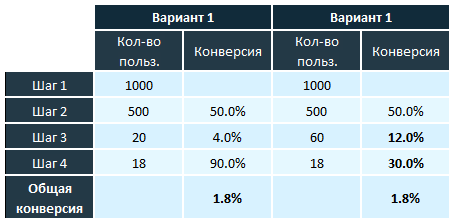A tool such as a conversion funnel helps to find weaknesses in games. How to work with it, – says devtodev analyst Vera Karpova in our series of materials “Performance indicators of games”.
The publication is published as part of a series of materials about game metrics from App2Top.ru and devtodev. Articles are divided by seasons, each of which is dedicated to a specific topic. The second season is called “Users”. In it, we talk about those business metrics that reflect the effectiveness of the application in terms of working with the audience.

Vera Karpova
When a new user comes to the site or application, I want him to perform a targeted action – payment, registration, ordering or any other action that is valuable for the developer.
But, firstly, not all of those who get into the product perform this action. Secondly, before performing it, users go through several intermediate steps of interaction with the interface by clicking on various buttons, switching menu sections, clicking on links and pages, filling out various forms.
In order to investigate the behavior of users in the product, to understand how they see it, to find “weak” places, to find out at what steps on the way to the goal they “fall off” and optimize processes inside the application – a tool such as the conversion funnel is used.
The funnel consists of a sequence of user actions and shows how many unique users made each of them: how many people took the first step, how many then moved on to the second, and so on.
Thus, the funnel shows the conversion rate between steps (the ratio of users at step N to users at step N-1), allows you to identify bottlenecks where this conversion falls more than at other steps, that is, where the largest outflow of users occurs.
It is worth noting once again that the funnel feature is that it is built according to the number of unique users who have performed actions, despite the fact that it is based on actions performed in the product.
This tool is called a funnel for a reason, because the number of users at each step is gradually decreasing. It is unlikely that it will work out so that absolutely all users go through all the steps of the funnel.
Here is an example of one of the possible sequences of actions in the funnel: the user opened the application page in the mobile app store → downloaded the application → made the first payment → made the second payment.
Having received the result of the funnel, it is possible to identify weak points: places with the lowest conversion. In this example, this is making the first payment after downloading the application. The conversion rate at this step is the lowest – only 4%. Then, after identifying this place and experimenting with it, you can build a funnel again and see how the changes affected the conversion.
When analyzing the results of the funnel, it will not be superfluous to additionally calculate the total conversion from the first step to the last, since as a result of experiments, the conversion at one step may increase, but at the same time fall on the subsequent ones. This may, for example, happen due to attracting inappropriate traffic.

Therefore, when optimizing funnel steps, it is worth tracking the conversions of all steps, not just the one that is being worked on.
Also, when analyzing funnels, you can apply different segments to them and compare, for example, how users from different countries or from different channels go the same way.
Based on our experience, you can use the funnel to explore completely different processes in the product: from making a purchase to completing a tutorial. Both are sequences of steps that not all users go through.
You can also use funnels to evaluate the effectiveness of email newsletters, compare traffic sources, evaluate the passage of user stages or levels of the game and any other processes in the application that affect monetization and user engagement.
Funnel is an excellent tool to optimize the path of users to the goal, increase their interest in the product, prevent outflow and thereby increase the financial performance of the project.
Read also materials about other metrics:



